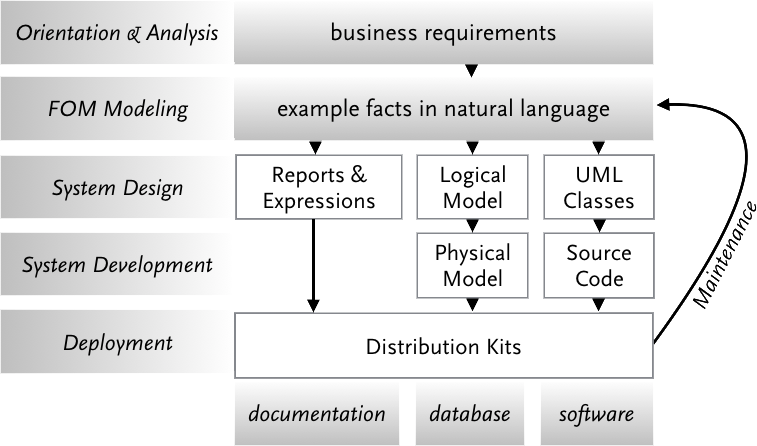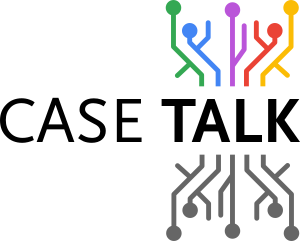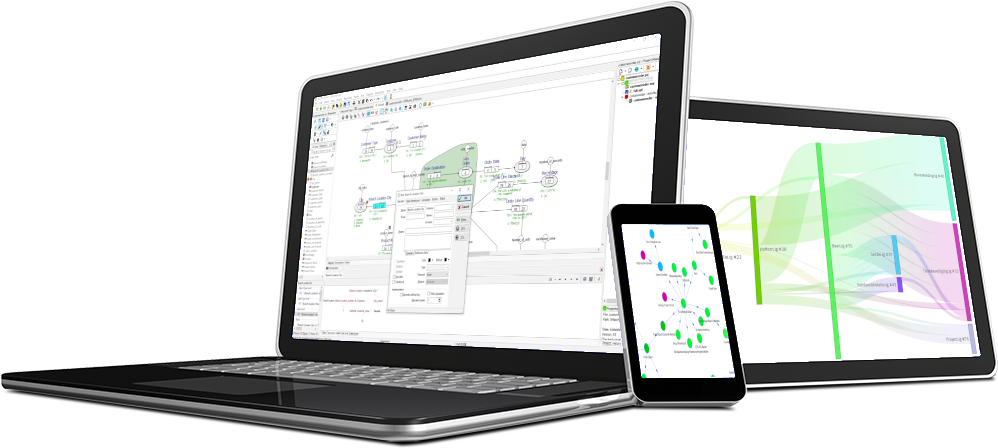CaseTalk as the conceptual modelling tool is for technical system developers somewhat difficult to place in the development life cycle. For this reason we'll show you a perspective which will firmly place its position in the cycle every IT related employee or consultant is part of.
Probably customers start with the orientation and perhaps a brief analysis of their requirements. From this the IT department or IT consultant is approached to start modelling the requirements as a basis for further system implementation. This is the moment CaseTalk kicks in. User requirements will lead to a collection of documents and samples, which are used in the conceptual modelling phase. From these sources fact expressions are derived and assembled.
CaseTalk will stay with the project progress even after this well into the design phase. Generating a database can all be done very well with any ER case-tool, but then IT personell is required to interpret the source documentation and samples and use gut feeling to decide which tables and columns are required. Rather then guessing, deriving an ER diagram from the original conceptual model is more advisable. The initial customer (you know who, the guy paying bills) can validate the model from FCO-IM more easily.
After the design phase is realised the software development can start. The business rules and corresponding expressions and diagrams are an excellent source for developers to start building ending with deploying software. While this is going on, incremental changes (maintenance) may be made by constantly adjusting the conceptual model where necessary, even after initial deployment.
Below is a diagram if this cycle and its phases:



